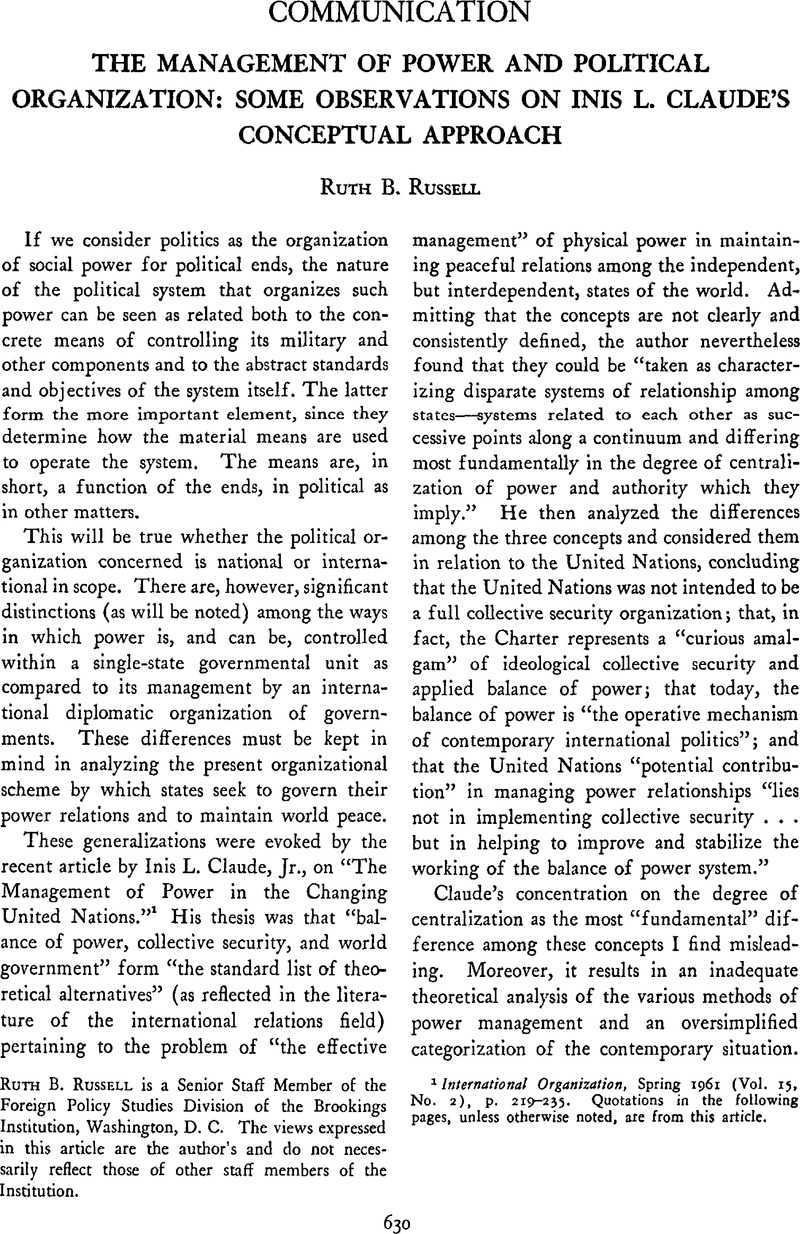Article contents
The Management of Power and Political Organization: Some Observations on Inis L. Claude's Conceptual Approach
Published online by Cambridge University Press: 22 May 2009
Abstract

- Type
- Communication
- Information
- Copyright
- Copyright © The IO Foundation 1961
References
1 International Organization, Spring 1961 (Vol. 15, No. 2), p. 219–235CrossRefGoogle Scholar. Quotations in the following pages, unless otherwise noted, are from this article.
2 Without getting involved in fine semantic distinctions, let us simply note that a grouping such as that of the Warsaw Pact countries, while nominally an international organization of independent states, is in actuality nearer a Soviet imperium. For purposes of this paper, it will be so classed. Although its members have separate votes in the United Nations and other international agencies, they are always cast as a unit, which applies to no other so-called “bloc”; there is no nonsense about who controls the power of this group.
3 I cannot see, however, how the balance of power concept can also cover that “extreme of decentralization,” a scheme within which individual states operate either “singly or in combinations.” Each-state-for-itself is international anarchy–the absence of, rather than a system of, management. Alliance agreements may be very loose, but whatever the understanding entered into, it constitutes a form of joint undertaking, even if the coordinating “agency” of the arrangement is no more than a signed treaty.
4 Quoted in Russell, Ruth B., A History of the United Nations Charter (Washington, D. C: Brookings, 1958), p. 396.Google Scholar
5 “Introduction to the Annual Report of the Secretary-General on the Work of the Organization 16 June 1960–15 June 1961,” General Assembly Official Records, Supplement 1A, p. 1.
- 2
- Cited by




